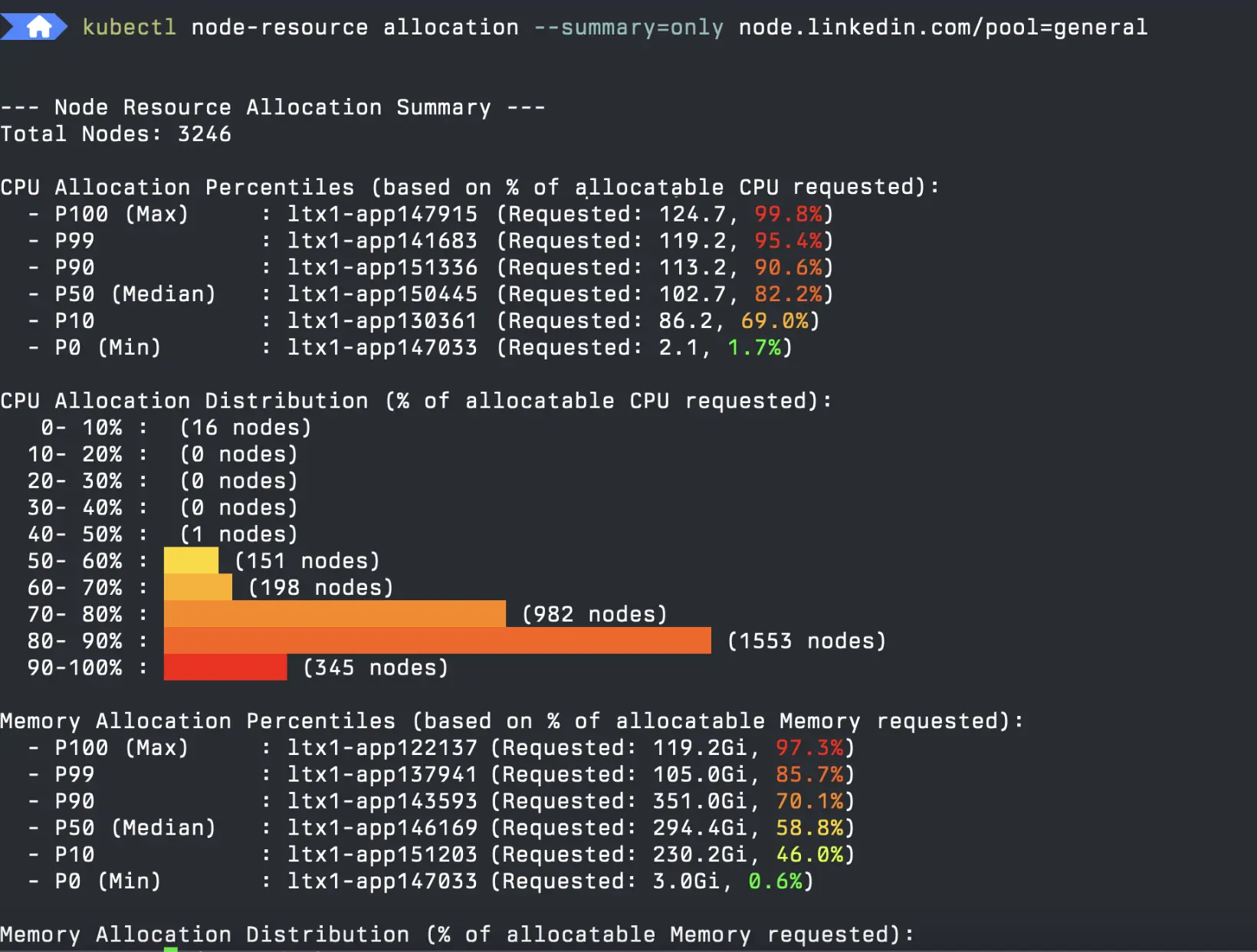Optimize Kubernetes Resources with kubectl-node_resource: Cluster Capacity at a Glance

Understanding resource consumption across Kubernetes nodes requires aggregating pod requests, comparing them against node capacity, and correlating with actual metrics-server data. Native kubectl commands expose this information piecemeal, forcing operators to manually calculate free capacity or identify over-provisioned nodes. kubectl-node_resource consolidates allocation and utilization metrics into color-coded summaries, enabling instant visibility into cluster resource health for capacity planning and troubleshooting.
What is kubectl-node_resource?
kubectl-node_resource is a kubectl plugin that displays node-level resource allocation and utilization in a structured, easy-to-read format. It shows how much CPU, memory, GPU, and ephemeral storage are requested by pods (allocation) versus how much is actively being consumed (utilization) by querying metrics-server. The plugin supports filtering by node labels, sorting by usage percentage, and exporting data as JSON for integration with monitoring systems or automation scripts.
Key Features
- Allocation View: Displays total pod resource requests per node to identify over-committed or underutilized capacity.
- Utilization View: Shows real-time resource consumption from metrics-server for accurate performance insights.
- Color-Coded Output: Highlights nodes approaching resource limits with visual indicators for rapid assessment.
- Flexible Filtering: Query specific node groups by label selectors (e.g.,
role=worker,zone=us-east-1a). - JSON Export: Generate structured output for parsing by external tools or dashboards.
Installation
Install kubectl-node_resource via Krew, the kubectl plugin manager:
kubectl krew install node-resource
Verify installation:
kubectl node-resource --help
Usage
Display resource allocation across all nodes:
kubectl node-resource allocation
Show actual resource utilization using metrics-server data:
kubectl node-resource utilization
Filter results to specific node groups using label selectors:
kubectl node-resource allocation "node-role.kubernetes.io/worker"
kubectl node-resource utilization "topology.kubernetes.io/zone=us-west-2a"
Export utilization data as JSON for automation:
kubectl node-resource utilization --json > cluster-utilization.json
Sort nodes by CPU or memory usage percentage to identify resource hotspots:
kubectl node-resource utilization --sort cpu

Operational Tips
- Identify Stranded Capacity: Compare allocation vs. utilization to find nodes with high requests but low actual usage—candidates for pod redistribution.
- Spot Overcommitment: Check allocation percentages exceeding 100% to detect nodes at risk of resource contention during traffic spikes.
- Automate Capacity Alerts: Pipe JSON output into monitoring systems to trigger alerts when cluster-wide utilization crosses thresholds.
- Audit GPU Usage: Use the plugin to verify GPU allocation and utilization on ML/AI workload nodes, ensuring expensive hardware isn't idle.
Conclusion
kubectl-node_resource simplifies Kubernetes capacity management by surfacing allocation and utilization metrics in a single command. Its filtering and export capabilities make it indispensable for SREs optimizing cluster efficiency and planning infrastructure scaling.
For efficient incident management and to prevent on-call burnout, consider using Akmatori. Akmatori automates incident response, reduces downtime, and simplifies troubleshooting.
Additionally, for reliable virtual machines and bare metal servers worldwide, check out Gcore.
